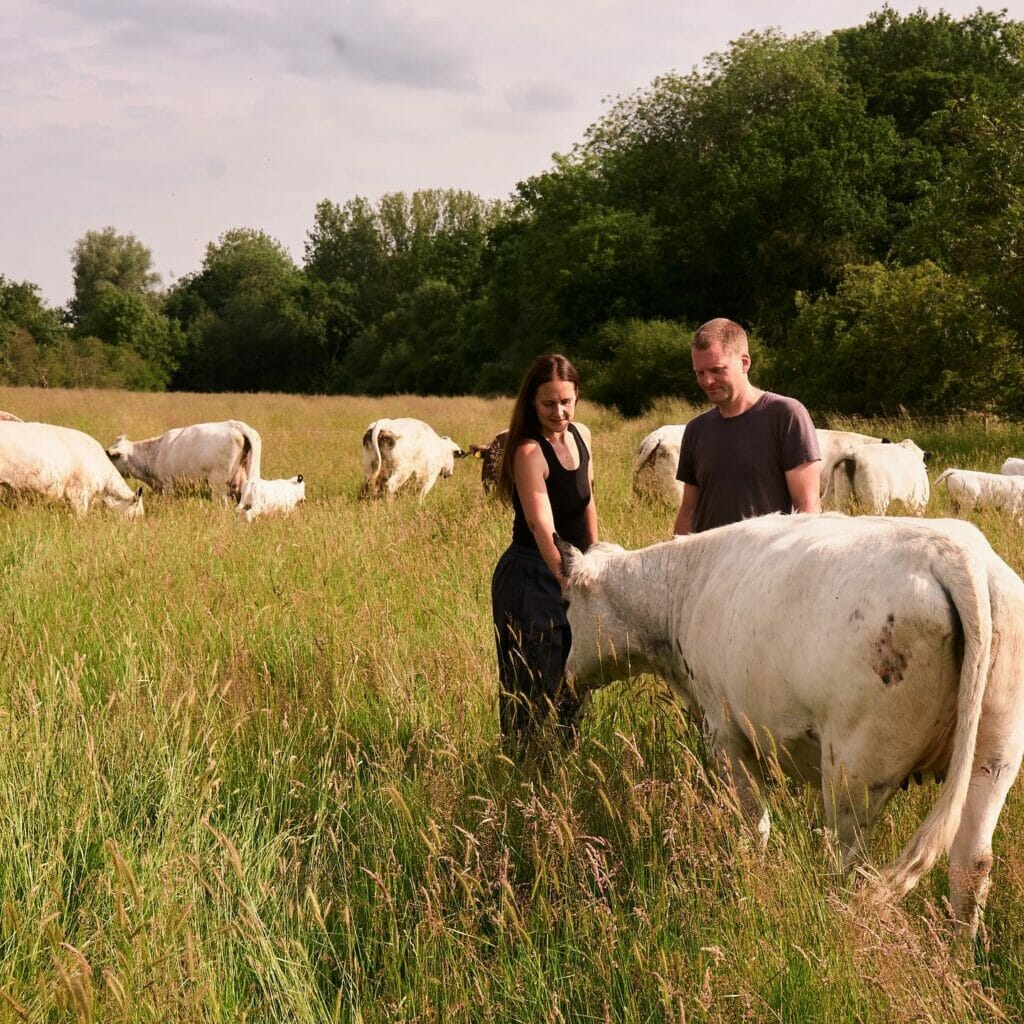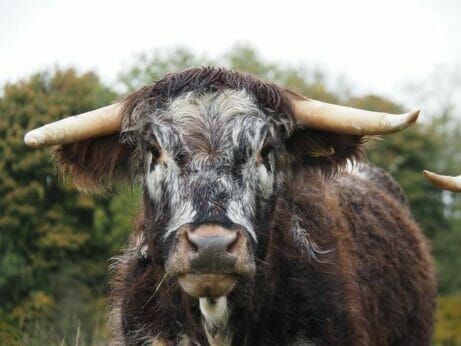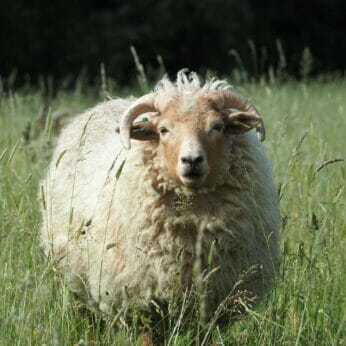As new entrants to farming, James and Katie Allen didn’t have access to land ownership, but they followed their passion anyway.

When James Allen and his wife, Katie, started Heritage Graziers in the summer of 2015, they didn’t own any pasture or farmland, and neither had a background in agriculture. While their personal interest had led them to keep some livestock at their home in England—a few sheep here, a few pigs there—Katie worked in marketing and James in computer programming. If they wanted to grow beyond those few animals and break into the farming life in earnest, they would need to get creative.
Across the U.K., farms often stay tied to families or corporations, and farmland is notoriously difficult to purchase or lease. While new, post-Brexit subsidies will reward nature-based farming, they won’t make it any easier for newcomers. “Most farmers are farmers because their parents are farmers—and grandparents. So, they’re kind of inherited down,” says James. “If you go to places like Wales, there’s a lot of companies—and not necessarily British companies—buying up land as a way of potentially offsetting carbon.”
James grew up helping on a cousin’s farm, which sparked a passion for nature-based agriculture, and Katie’s initial interest grew out of a desire to participate in and preserve a small corner of the British wool industry. As their interest grew, they realized they didn’t want to wait years or decades to begin. Instead, they discovered a way around these barriers, acquiring a herd of cattle and a basic understanding of conservation grazing, the practice of renting herds to heritage sites to maintain native landscapes. From there, they expanded to also partner with landowners to rehabilitate fields that had been neglected or monocropped for years. Heritage Graziers was founded without the Allens owning any land at all.
Their herds grew to include Castlemilk Moorit and Portland sheep as well as British White and English Longhorn cattle. All are breeds native to the British Isles, which makes them particularly well suited to nature-driven grazing; the hardy animals eat dominant plant species, which gives other plants a chance to thrive and cultivates greater botanical diversity. Grazing fields in sections also allowed grasses to grow taller, and their deeper roots to keep more carbon in the soil.

Heritage Graziers graze cattle like this English Longhorn to give native flowers and grasses a chance to thrive.
The more involved James became with agriculture, the more he learned about the relationships between livestock, soil health, native seed banks and even dung beetles. “For me, the key thing is working with nature,” says James. “We human species are alive because of nature. Nature is the environment we live in. It gives us all of our resources. If we don’t learn to work with that environment, then, ultimately, the degree of cleverness we have to have to overcome the damage by taking from nature—we will not be clever enough to get there in time.”
Heritage Graziers learned by doing (“Basically, we got cows and got on with it,” says James), but James also began soaking in knowledge wherever he could—from other farmers, extended family members and even local vets. He also became very involved in several nature-based farming networks in the U.K., and both Allens have spoken at events around the country. “Everybody’s got something to teach us,” says James. “It gets to a point, after a certain while, [that] you sort of realize people are listening and learning from you, which is a bit of a weird concept.”

Heritage Graziers’ native-breed sheep grazed on the land of partnering farmers and heritage sites.
In January, after nearly eight years of grazing, the Allens purchased a farm in Wiltshire, in Southern England. For the first time, Heritage Graziers would be staying put for most of the year, though they’ll still look for a conservation grazing site for part of the year, as the fields are too wet to overwinter the cows.
The farm itself came to the Allens through a stroke of luck: James’s father-in-law had recently left the couple an inheritance, and they happened across a farm that was unappealing to both developers and farmers. It had too much house for anyone interested in the barns and land (a boon to the Allens, who share five children) and too many barns to make the house an attractive buy. “We feel it kind of fell between the gaps, really,” says James. “We believe we were the only people that wanted to take it on as a whole farm and farm it as a farm. They were quite keen for that to happen. So, you know, we were a bit lucky.”
For the first time, James is thinking about all that he and Katie can accomplish by staying in one spot. He uses the mob grazing techniques popular in regenerative grazing, which require regularly moving electric fences to keep the livestock contained to a certain area. Before, he had to drive to where the cattle were grazed and undo several gates before he could begin moving fences. Being right next door will free up time for other regenerative practices, such as restoring soil, building up hedges for biodiversity, engaging in agroforestry and setting aside corners for wildlife.
As the Allens’s journey demonstrates, becoming “farmers without a farm” is achievable, though Allen also pointed out that it’s not without compromises. He has kept his day job as a programmer throughout the venture to pay half the bills, a role he will continue at the new farm. “You’ve got to compromise,” he says. “You’ve got to be realistic. But you’ve also just got to go for it. It is hard work, there’s no doubt about it, but it is possible. … Don’t do things that are just normal, just because that’s the way it has always been done. You’ve got to be a bit creative and be a bit different.”
I’m happy to hear James loves nature. “For me, the key thing is working with nature,” says James. “We human species are alive because of nature. Nature is the environment we live in. It gives us all of our resources.” We need more people like him.
Smart couple,, I don’t believe in carbon offset by corporations, they just lock up land and it degrades,,good idea,,to get the land going again
Best of Agriculture 4.0 – Farmers are already reducing fertilizer cost and use over 70% and reducing soil toxicity with the “SNX30 fertilizer supplement”. It’s backed by a growing number of agronomists and NCGA Corn Yield Winners too.
Two things you need for growing food. One is carbon and the other is Nitrogen
These are the two essential things you need to feed the world. I believe that the reset generation is trying to kill us.